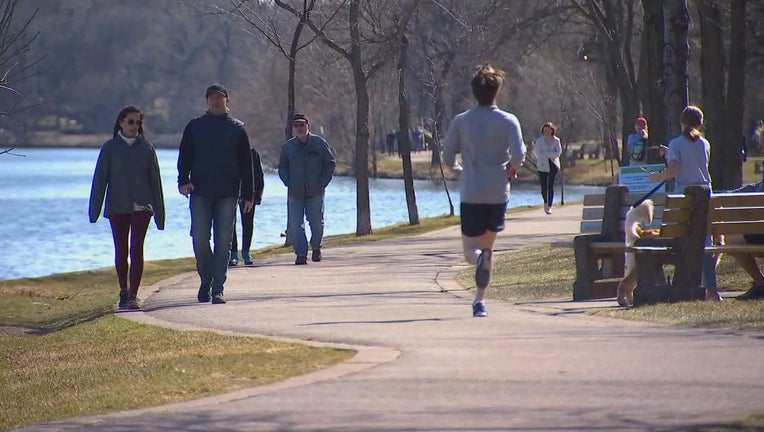Minnesota drops from 'A' to 'D' on social distancing report card

People walk around Lake Harriet in Minneapolis amid the stay-at-home order. (FOX 9)
(FOX 9) - A little more than a month after the state of Minnesota received an “A” grade in social distancing, the state has now been given a “D”.
According to extrapolated cell phone data recorded by Unacast, Minnesota’s letter grade has gradually decreased since its initial “A” grade on March 26.

Minnesota drops from A to D on social distancing report card
A little more than a month after the state of Minnesota received an A grade in social distancing, the state has now been given a D.
In March, Minnesotans had decreased their average distance traveled by about 45.66 percent on average. As of May 5, data shows Minnesotans have now only decreased their travel by 25-40 percent statewide.
The top performing counties are all rural counties with “B” letter grades. They are Pipestone County, Redwood County, Koochiching County and Cook County. Those counties all continue to decrease travel by 40-55 percent on average.
Washington, Anoka, Dakota, Stearns, Benton, Steele, Olmsted, Blue Earth, Sherburne, Wright, McLeod, Rice, Carver, Scott and Isanti Counties all received “F” grades with less than a 25 percent reduction in travel.
The state’s most populous county and that with the highest number of confirmed cases, Hennepin County, received a "C-" grade.
To our east, the state of Wisconsin decreased from a “B+” in March to a “D-“ this month. St. Croix County, which borders Minnesota, was one of the worst-performing counties in the state, earning an “F” grade. Nearby Eau Claire County also earned an “F”.
Nationwide, Washington, D.C. is the top-performing state with a “C” grade. Residents there have decreased travel between 40 and 55 percent.
Alaska, South Dakota, North Dakota, Maine, Vermont and Nevada were the next highest-performing states earning "C-" grades.
A long list of states earned “F” grades, including Mississippi, Arkansas, Oklahoma, Missouri, Louisiana, Pennsylvania, Virginia, Texas, Indiana, Illinois, North Carolina, Alabama, Tennessee, South Carolina, Georgia, Ohio, Connecticut, Delaware, Maryland, Rhode Island and Florida.
To collect the data, Unacast says it used tens of millions of anonymous cell phone records and their interactions with each other in order to ensure user privacy.

